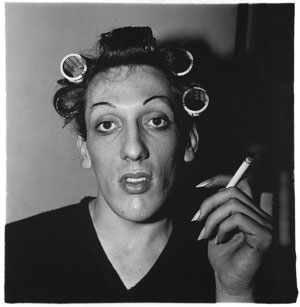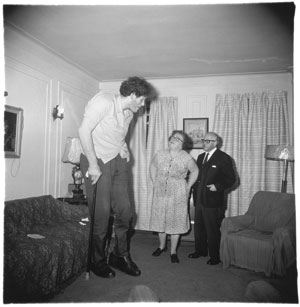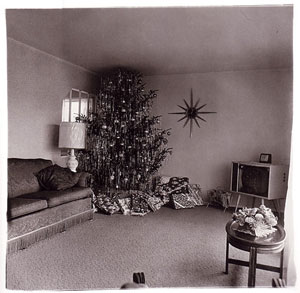Lawrence Markey Gallery has a successful reputation for showing primarily subtle minimalist abstractions by a core group of artists (which includes James Bishop , Mel Bochner , Ernst Caramelle , Paul Feeley , Joel Fisher , Suzan Frecon , Robert Moskowitz , Max Neuhaus , Richard Nonas , John Riddy , Fred Sandback , Acharya Vyakul and Jerry Zeniuk ).

Fred Sandback…untitled (Triangle)…1990…Yellow acrylic yarn…(Installation view from inaugural exhibition, 2005)
That success began in New York in the mid-80s, and plans to continue here in Texas. Beginning another chapter in his evolution as a gallerist, about a year ago Markey closed his space in New York’s Upper East Side and relocated to San Antonio. Reopening his gallery with his signature aesthetic and his stable of artists, Markey will no doubt become an important part of the Texas art scene. Recently, Markey took the time to talk about his move and his impressions of San Antonio thus far.
JJ: Let’s start by talking about why and how you got into this business. You had a gallery for about 15 years, beginning in 1990. Your first space was in Soho on Vandam Street, right?
LM: Yes it was. Well, I studied Art History in college. I went to Pomona College in California, studied at Sotheby’s in London and then moved to New York. I love art but I wasn’t an academic and I was interested in business. So, I figured out a way to combine those interests.
How did you find it starting a gallery and getting into the art world during the early 1990s? At that time it was the beginning of the end of the art boom.
It was the mid-80s when I moved to New York and five years later I opened my gallery. I first worked out of my loft in Tribeca. At that time there was so much dealer-to-dealer activity — I could go meet with a dealer because their doors were open, talk to them and buy work and otherwise broker things with different dealers and/or clients and, in that way, establish people to work with. Then, I marveled at the galleries that had clients and museums to work with and now, that’s what I do. There is still a lot of dealer-to-dealer activity, but it’s not primarily what I do anymore. There were a lot of us who arrived at that time, a lot of us had galleries or worked at auction houses or were dealing art. I think it was a really good time to do it — I don’t know if one could do it now.
On the other hand, New York remains the center for opportunities. There are so many people starting new galleries. It’s not the same now though and not what I did; I did not immediately move in and start showing younger artists. I always had an involvement with historical works and the secondary market — the resale market. The business side of it always interested me but everything has always been led, for better or worse, by my interest in the art. As I was starting, one of the first things I bought was a group of drawings by Richard Tuttle which I thought were great because I liked them, and the point is that I always go with what I like. That’s what has driven all of what I have shown. I think it would be hard for someone young and interested in historical works to do that right now, but I could then, great works weren’t that difficult to find so it was kind of a lucky time. Since then the overall market has climbed up and down but I haven’t ever swung real high or low, I’ve been working with a core group of artists that interest me and that I show consistently. I have rarely, if you look at the history of my gallery, added new people. Mainly I’ve shown — and not by design as I really haven’t planned this business or gallery — mid-career artists and historical figures from the 1960s and 70s.
In looking at your artists it appears, although you have work in a variety of media, you focus on works on paper.
If I have a specialty it is unique works on paper. Yes, drawings and paintings on paper, definitely. However, I do show painting and sculpture and I love prints, which is an incredible field, but prints are a separate connoisseurship, so I only work with prints when it is an artist I am already very much involved with. I also work with two photographers, John Riddy and James Welling.
Have your entire core group of artists been supportive of this move?
They have! They are all ready to have a show in San Antonio and they are getting to work. Several are taking awhile though because we are going to do publications and that takes some time. So, I am not in a rhythm of doing show after show after show. In fact, I don’t have the next show scheduled yet but upcoming shows will include exhibitions with publications of work by Suzan Frecon and Robert Moskowitz.
And your artists aren’t worried that their dealer is no longer in New York?
No. They are happy to have the chance to show here and they have all also landed with other New York dealers one by one. But they will continue working directly with me; it is like having another gallery in Europe or elsewhere in the world.
Do you think that in the long run, it might be a real issue in so far as so many of your collectors are in New York and will see the work there? Or is it that you will handle the works on paper and the other galleries will deal with the other aspects of the artists’ work?
That issue is largely just a matter of my ability to get work from the artists. The artists give me work and it will be mine to exhibit and sell. And that is an important part of having a gallery, one is having the exhibitions and the other is getting interesting work out there in collections.
Well, based on the strength of the relationships you have with your core group you should be able to create a strong program.
Yes, all of the artists are interested in showing their work here and we’ve had good luck in placing it in good collections. The challenge for me here is the same as it was in New York, mainly to have great work. One other thing I really would like to do here is cultivate collections in Texas.
There are some very strong collections here.
There are some great ones that I am very much aware of and I’m sure there are many that I’m not aware of. Additionally, I think there are people here who could be cultivated as new collectors; I see that as a long term goal. But that is something that happens in a natural way, through having shows and having people into the gallery. I have to say that I do get some personal satisfaction from selling things to collectors in Texas, I just like that idea. And for example, selling to the Menil — my favorite museum anywhere — that is a great thrill for me.
Have you sold any work to them since being here?
Yes, both before I got here and since.
So, what was it that brought you to San Antonio?
This was a family move, I grew up here. My wife and I have two little girls that we decided to raise here and we love it here. So my move here was personal, and while I didn’t know the art scene here, I think I had a pretty realistic idea about it and, looking at it in retrospect, I think it was pretty accurate. What I didn’t know and have been really impressed with are the artists here. I have begun to meet some of them slowly and been to a few studios. It’s a very supportive atmosphere. It is one thing to hear that but it’s really true! New York has this reputation of being very competitive and that is true of course, but, as a dealer you cannot make it without having really good relationships with other dealers and probably in some fundamental way the same is true of artists. But here, the artists are very serious about their work, they are exhibiting here and elsewhere, and all seem to be traveling — I find out about things going on from them.
Again, I just started to get to know the scene but I’m enjoying that quite a bit. I’ve also been very pleased with the response to my first shows, the openings were well attended and people have trickled in. Reviews have helped too. I don’t know how being here will effect what I show but I’m open to anything. I love looking at work. With me, nothing ever happens real fast and I’m always involved in looking at the work over a long period of time. I’m enjoying that and I’m truly impressed with what I’ve seen. I really am. You must be impressed too.
Yes, I’ve worked with some great artists here and have seen a lot of strong, serious work. I think that the addition of your space is really important because it helps provide a nice balance between artist-run and commercial spaces. I think there are so few strong commercial galleries here; for example, Finesilver is a great gallery and although they still have a space here in San Antonio, it seems they have moved their base to Houston.
I was happy to notice they just had an opening here.
Yes, but we are lacking commercial spaces here — there are only a handful. Houston is much stronger in that area. I do think galleries are necessary for artistic growth along with museums and written criticism — it all feeds off each other.
Yes.
I am interested in what you think about the San Antonio art scene and how you feel you are fitting in to it.
I see my gallery here as a continuation of my gallery in New York, in that sense it is a continuation of the relationships I had in New York with the artists I work with and the collectors and museums I’ve been working with. But it’s a very different way of doing business here. It is a good base of operations and it’s really easy to travel in and out of San Antonio. I actually love having a gallery here. I found a good space that I like, with this natural light which is very important to me, I just love seeing the way the works look with natural light. It took quite a while to find this place and I like the way it fits. As it is a continuation, I opened the space with a show of Fred Sandback’s work.
You often do that, right? Each of your three spaces has opened with an exhibition of his work?
Yes, he is definitely my good luck charm. The Indian artist Vyakul which is now up, I also showed once in New York. Virtually all the core artists I’ve been working with will be shown here. I’ve published in the past and I love books and publishing and it’s always been in my plans to do more. Now it is even more important as a way to keep up contact with the rest of the world along with visits to New York, as not everyone travels. Although I’m already impressed with how many people visit Texas, people really come here.
Images courtesy Lawerence Markey.
Jennifer Jankauskas is the Associate Curator of Exhibitions at the John Michael Kohler Arts Center in Wisconsin




